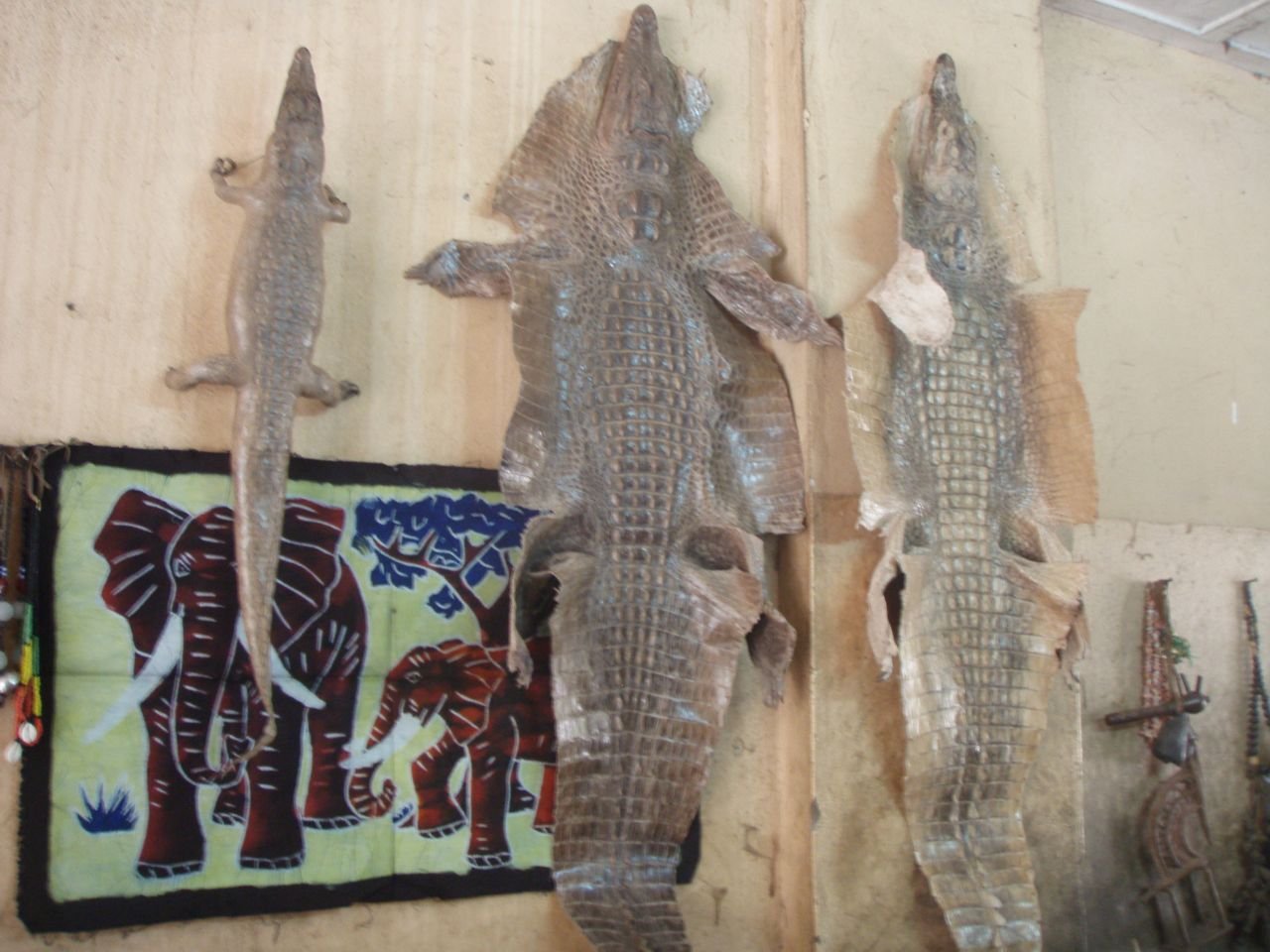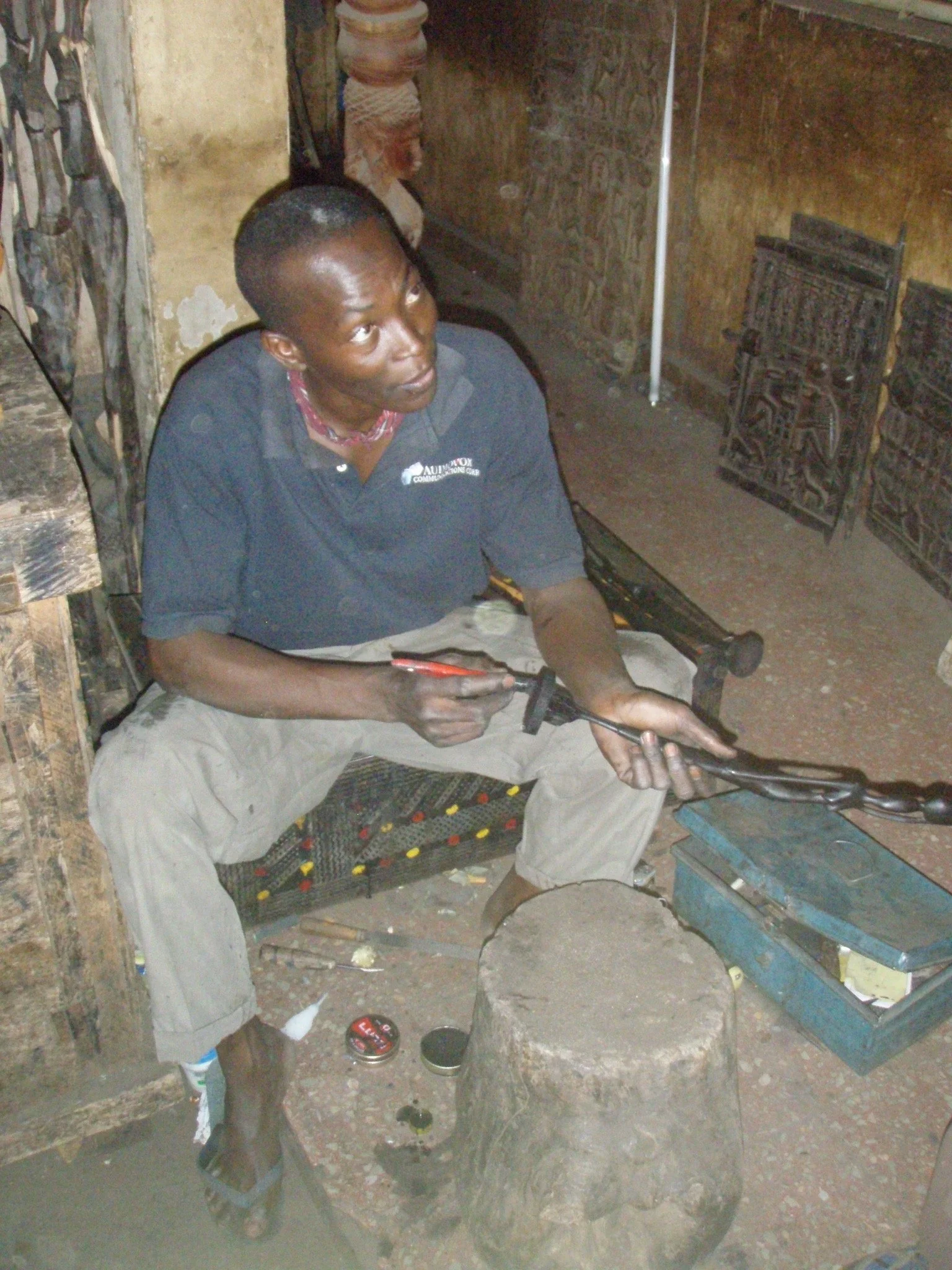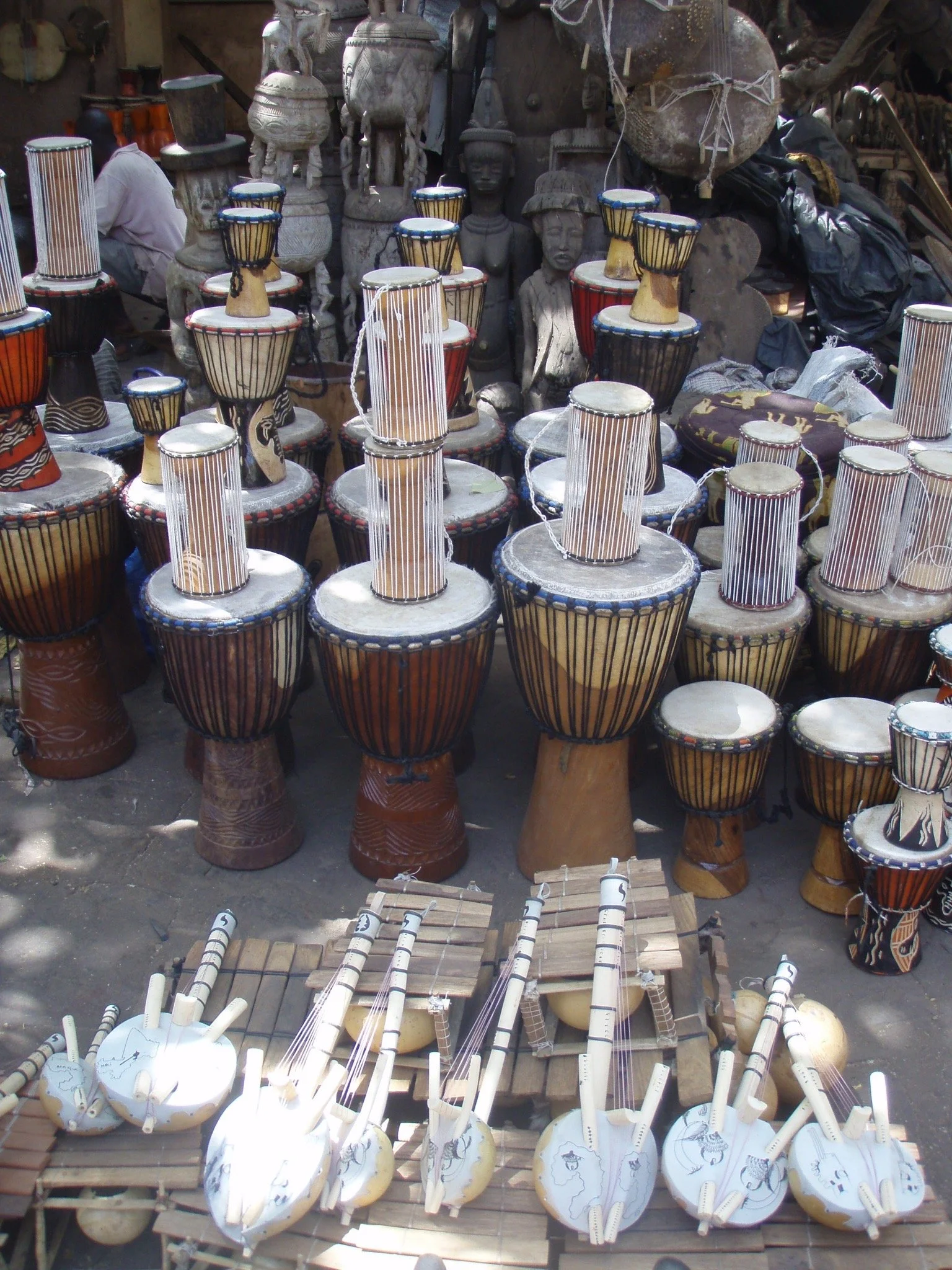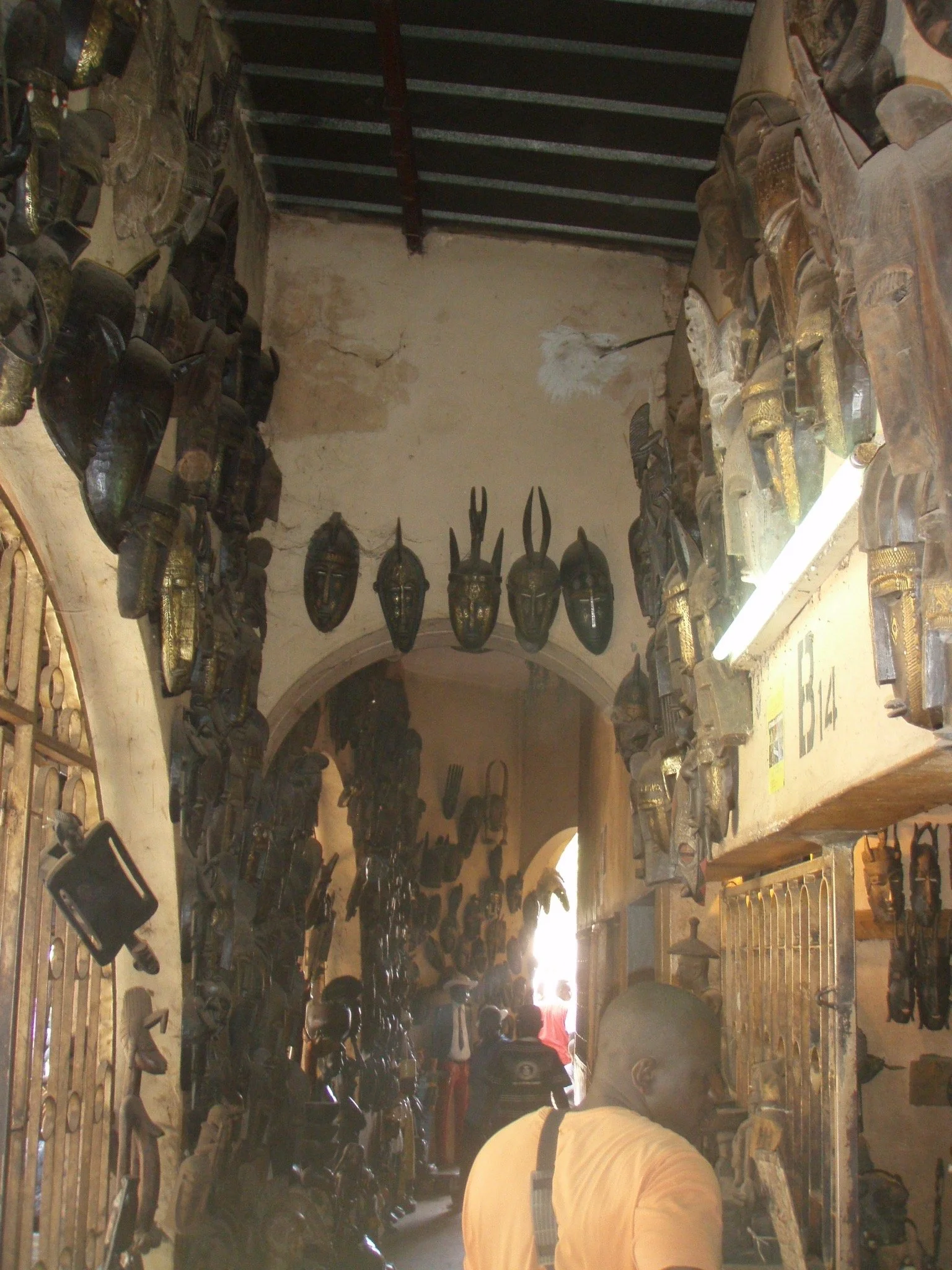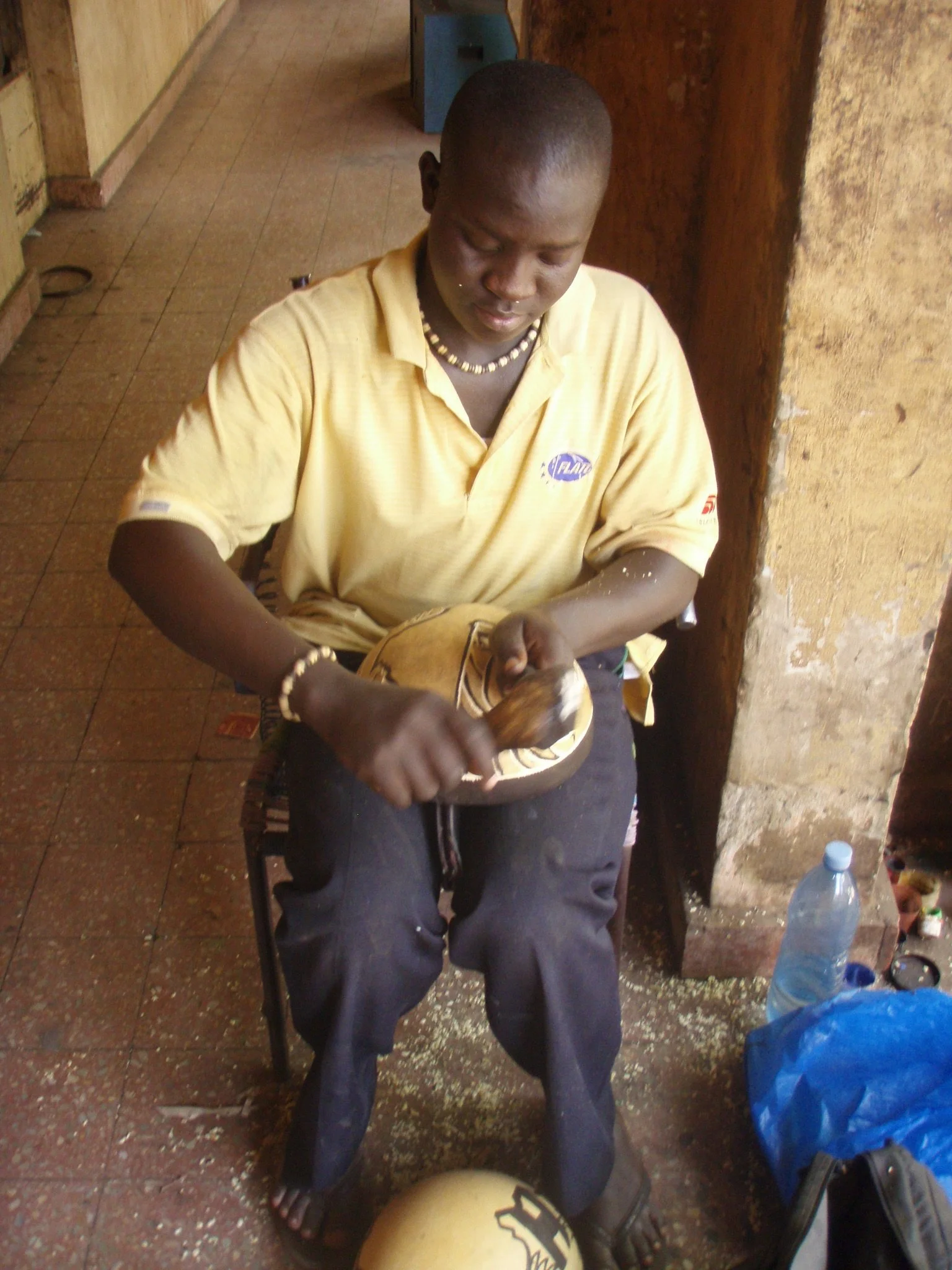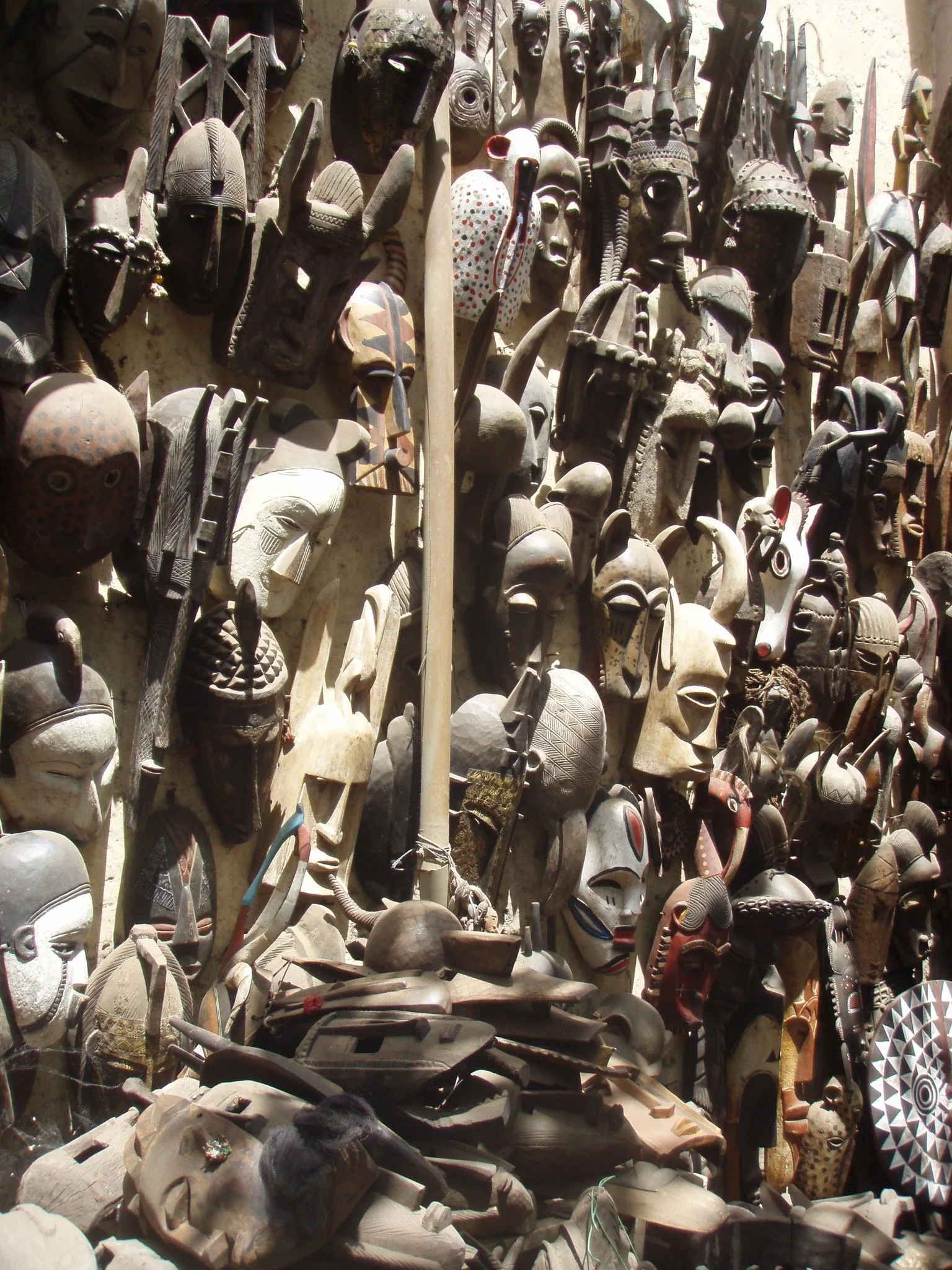
Artisana
26 April 2009
In addition to normal traffic the streets of Bamako are choked with bicycles, mopeds, barnyard animals, the occasional camel, and a multitude of small green busses called Sotaaramas. For some pocket change and a little knowledge of how the routing system works the green Sotaaramas will take you most places throughout the city with the central market serving as a hub. This market is huge, unbelievably congested, and has streets lined with shops and tables selling everything from fish to faucets. Artisana is contained within the sprawling market, located next to the splendid Bamako Grand Mosque, and is a destination unto itself.
Let’s just pretend you are visiting the great metropolis known as Bamako and make the decision to work up enough courage to check out this Artisana. Your guidebook said it was the place to pick up a few momentoes. While trying to hail a cab you spot a Toubob (white person) and hope for an English-speaker to strike up a conversation. Turns out your new friend, Jeff, is on his way to pick up a few gifts before heading back to Canada. He insists cabs are too expensive and for the real experience you should take one of those green deathtraps. Just then, one rambles up, so you both hop on only to find there is no room. But there is always room for one (or two) more when it comes to Malian public transportation.
After ten minutes of baking inside the green sauna the bridge-bottleneck finally unsticks itself, and a much-needed breeze filters in as you peer down into the funny colored Niger River. You make up your mind to spring for a cab on the way back. Soon the streets begin to narrow and fill with people as the smell of fish, fried food, and sewage envelops the green plow that is inching its way through the masses.
While rubbing your head because it would seem the bus was made for midgets you squeeze your way through the crowd, trying to keep eyes on Jeff and where you are stepping at the same time. Finally the crowd dissolves and your heart rate begins to slow as you pass under the archway and into a sunny, open courtyard lined with all sorts of interesting things.
The moment of respite lasts only for a few seconds. As Toubob = Money you are immediately accosted with salesmen trying to drag you into their shops, get a phone number, or give a business card. All space is used, inside and out. Merchandise spreads across the ground, hangs from trees, and covers the walls as high as they go. Masks, drums, carvings and paintings permeate throughout. The sound of workers pounding, chiseling, and shaping art into being echoes in and out of doorways. A few persistent salesmen succeed in drawing you into their dimly lit shops. The occasional screech of a table saw momentarily flickers the lights. The artwork is amazing. Completely worth the agonizing journey.
Everything is made on site. Many shops have similar items, so bartering is the name of the game. I am pretty good at getting the sellers to a third or less of the original asking price. This can be exhausting, but fun. It is easy to spend hours there, just staring at the seemingly endless expanse of human creativity.
I would love to open this Artisan Market up to those who cannot make it to Bamako. I even have a Malian friend who has been pushing me to make this happen. But it hasn’t for good reason. There are basically two ways to export artwork made in this part of the world. One is the bulk-shipping method where it is almost impossible for the Artisans to make a profit. The second is through a free-trade organization. It is not yet practical for a Malian business, let alone individual, to export goods themselves. The laws here make it difficult and the shipping costs are rather prohibitive. Most companies will not accept Malian debit cards so establishing a website is quite infeasible. Transferring money also poses a significant challenge. While the Internet, in theory, should make such an exchange possible the system at this point will simply not allow it. For the time being, I guess you just need to know someone who lives there.

